Conservators from Skillingtons worked with an international team led by Graham Abrey for the Balkan Heritage Foundation with the National Institution Stobi at a site in North Macedonia. They were helping to conserve part of one of the most important buildings at Stobi; the 4th century Roman residential Theodosian Palace. An exemplar trial was wanted to show how current conservation practices could work for the rest of the site. The works consisted of repairing damage to a wall caused by post-excavation exposure to the atmosphere and the failure over time of historic attempts to stabilise it, and included repairs to the wall head and consolidating losses through salt damage.
Whilst working on the site in May 2024, Skillingtons trained local heritage workers in conservation best practice and maintenance. The project was funded by the Kaplan Fund.
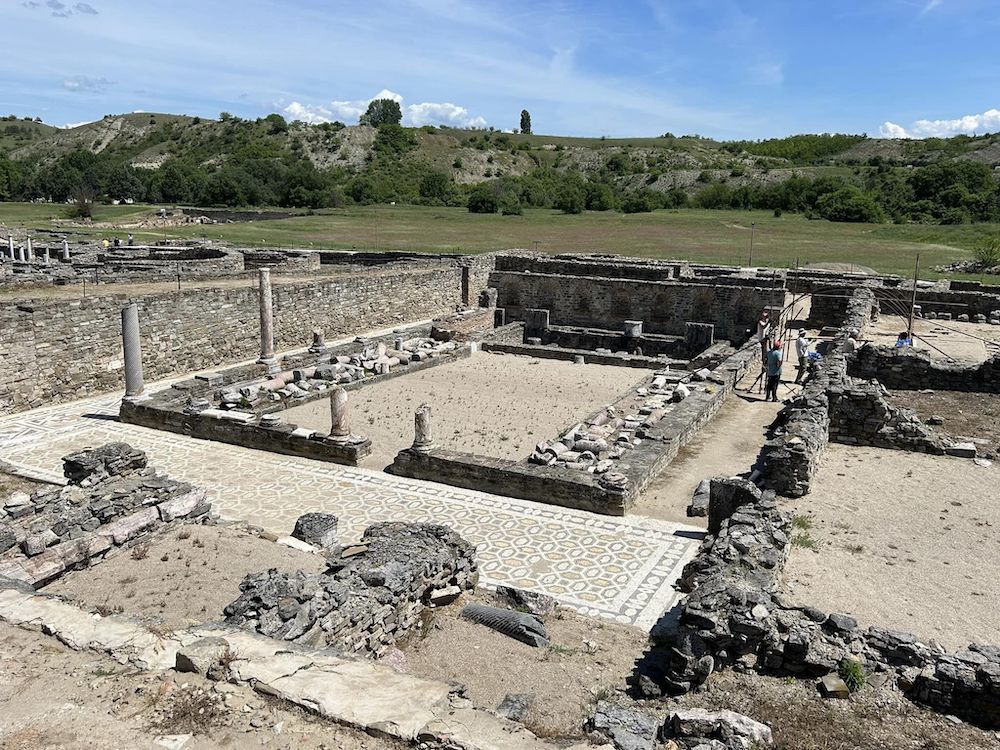
Theodosian Palace, looking across the peristyle courtyard. Mosaics line the courtyard and towards the back is where a pool was.
Stobi is a Roman city archaeological site, mainly dating from the Early Imperial (1st century BC) to Late Antiquity (6th century AD) periods. It is vast, with many important buildings and mosaics, much of it yet unexcavated. Next to the River Vardar in North Macedonia, it is easy to appreciate Stobi’s strategic position. The Palace was excavated in the 1920s, and in more recent years the Balkan Heritage Foundation has facilitated small-scale archaeological and conservation projects.
At Stobi, the Roman streetscape survives well. The conservators found it easy to picture the shops and houses on their walk up to the Theodosian Palace each day.
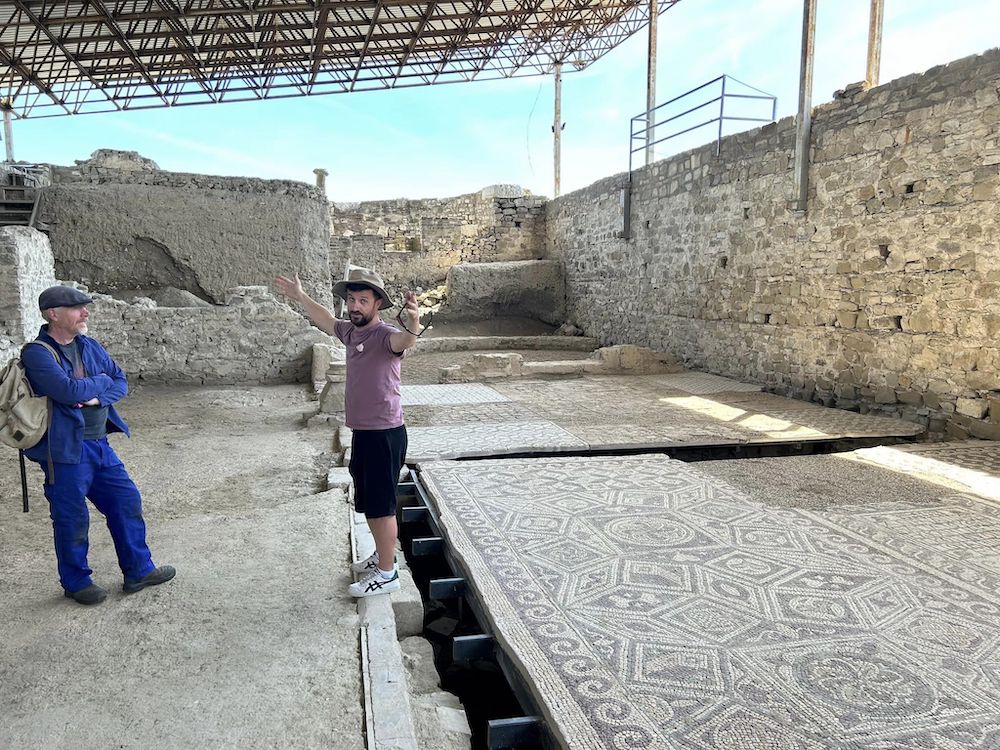
One of the basilicas, with a large mosaic re-mounted on honeycomb board and on a suspended floor. This is the most important early Christian site in North Macedonia, here being explained to us by one of the project archaeologists, Dimitar Nikolovski.
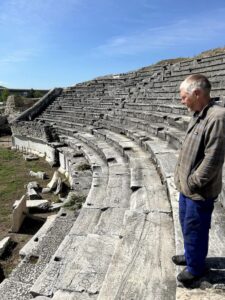
Skillingtons’ conservator Theo in the amphitheatre. It originally seated about 7,500 people, with citizens names on the best seats. Much of the marble has been robbed, maybe a quarter of the seats survive. The holes were for holding nets to protect from any mishaps emanating from the main action!
Skillingtons conserved a section of wall from the Theodosian Palace as an exemplar of good practice using lime mortars. This was then adopted by the project at large to ensure the adoption of professional conservation standards. Some very good mature lime putty is available locally and the project’s supplier, a farmer about an hour’s drive from Stobi, regularly burns lime in a traditional kiln built into a slope. He told us that he remembered there being a hundred lime burners in the region and now there are only a couple.
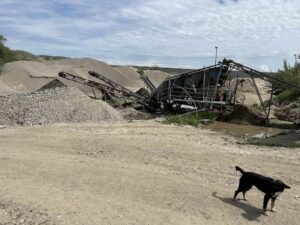
Sand extracted from beside the River Vardar, close to Stobi. Thanks to this, our re-pointing mortar looks so similar to the Roman mortar used.
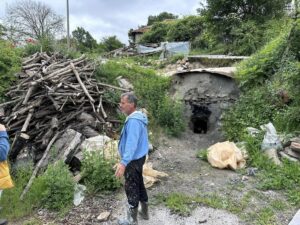
Traditional lime kilns: the side of the kiln is in the background, and the pile of wood used for fuel in the foreground.
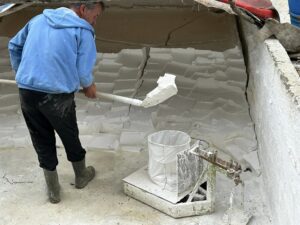
Traditional lime: there are several lime pits on the go. The end product is shovelled out in large cheese-like lumps and bagged up by hand. Much goes for use as limewash, and for mixing with cement in restoration projects. Use on its own as a binder for mortars remains quite rare here it seems, which is a shame because it is absolutely superb.
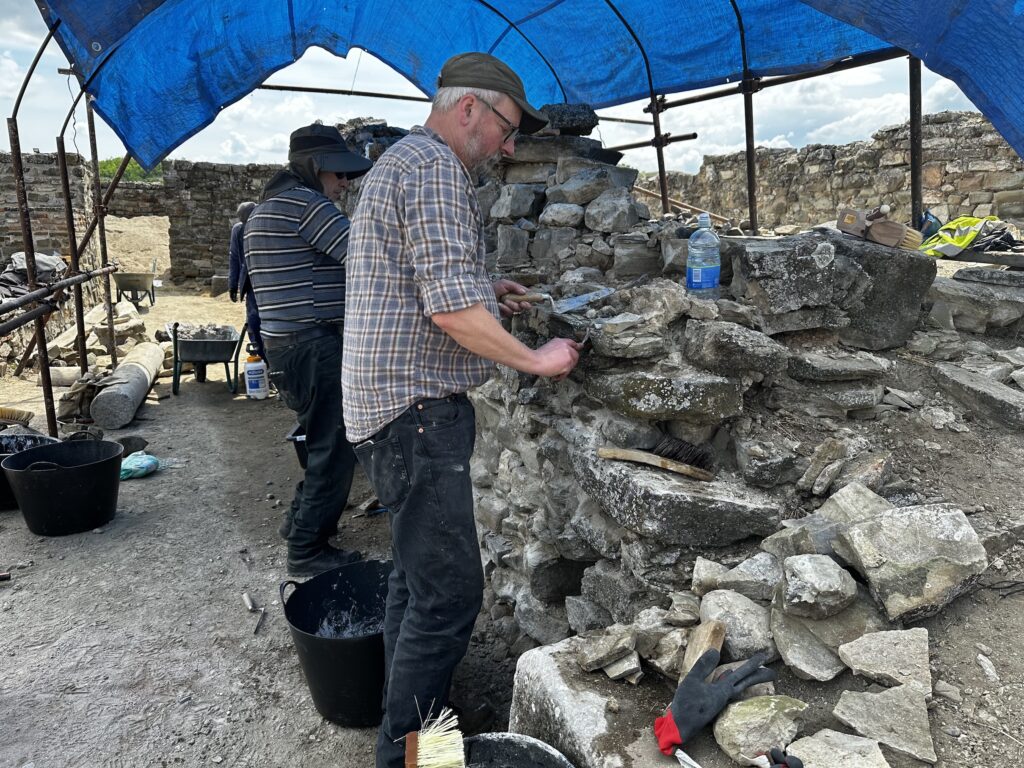
Skillingtons’ founder and Managing Director, Dr David Carrington (foreground), working on the wall under the shade of a canopy.
Skillingtons are delighted to have helped conserve this important site, and to pass on their specialist knowledge to local practitioners who will help to maintain the site in the future.


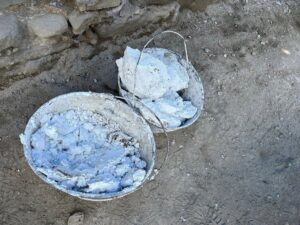
Sorry, the comment form is closed at this time.